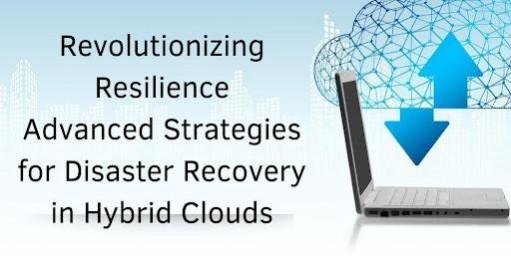
In a rapidly evolving digital landscape, where business continuity is paramount, Suhas Lakum, a distinguished thought leader in cloud technology, unveils groundbreaking insights into disaster recovery (DR) strategies for hybrid cloud environments. These strategies merge on-premises infrastructure with cloud scalability to tackle critical challenges, harness emerging technologies, and redefine resilience. By highlighting transformative innovations, the analysis empowers enterprises to achieve operational stability and adapt seamlessly to disruptions in an increasingly dynamic environment.
A New Era of Disaster Recovery
Hybrid cloud adoption has revolutionized traditional disaster recovery (DR) frameworks, seamlessly integrating on-premises infrastructure with cloud capabilities. This blend empowers enterprises to harness the scalability and flexibility of cloud systems while maintaining stringent control over critical assets. The rise of hybrid architectures addresses the evolving demands for agility, operational efficiency, and resilience in an increasingly complex digital landscape.
Central to hybrid DR strategies are high-performance data centers equipped with advanced storage arrays, working with expansive cloud storage solutions. These systems achieve exceptional availability rates of 99.99%, significantly outperforming conventional DR setups. The strategic integration of synchronous and asynchronous data replication provides robust protection tailored to mission-critical and routine workloads, ensuring business continuity and operational integrity across diverse environments.
The Orchestration Revolution
Automation is a cornerstone of modern disaster recovery (DR) innovations, revolutionizing recovery workflows and drastically reducing downtime. Advanced orchestration tools streamline processes, while AI-driven orchestration and containerization deliver unmatched speed and reliability. Automated recovery systems can now execute within 30 minutes, leveraging intelligent failover mechanisms to minimize human error and enhance precision. Introducing hybrid replication strategies underscores this evolution, combining synchronous and asynchronous approaches to achieve an optimal balance of performance and cost-efficiency. These strategies ensure zero data loss for critical applications while efficiently managing resources, demonstrating the transformative potential of automation in DR solutions.
Data Replication Redefined
Data replication technologies are integral to disaster recovery (DR) strategies, ensuring real-time synchronization and protection across diverse environments. Synchronous replication, with its zero-data-loss assurance, is crucial for mission-critical applications, while asynchronous replication efficiently handles larger datasets with minimal bandwidth use. These methods work together to form a robust safety net for complex infrastructures. Hybrid replication strategies further elevate the field by combining synchronous and asynchronous approaches, offering tiered, workload-specific solutions. This adaptability enables enterprises to achieve high availability while optimizing resource use, highlighting the strategic importance of custom DR architectures tailored to evolving organizational needs and priorities.
Embracing Emerging Technologies
The integration of artificial intelligence (AI) and machine learning (ML) into disaster recovery (DR) systems marks a transformative shift, enhancing efficiency with faster response times, fewer false alarms, and precise failure predictions. These advancements empower organizations to proactively address vulnerabilities. Containerization accelerates recovery with scalable, modular solutions, while edge computing reduces data transfer and optimizes recovery times. These technologies underscore the need for agility and innovation in managing disaster scenarios.
Future-Ready Strategies
The evolution of disaster recovery (DR) strategies reflects the growing complexity of digital infrastructures. Hybrid and multi-cloud solutions now dominate, providing resilience to meet modern enterprise demands. With data volumes surging, innovations like quantum-resistant encryption and deep reinforcement learning enhance security and efficiency. Scalable, flexible solutions are essential, and investments in automation, compliance, and performance optimization will ensure robust, adaptable DR initiatives that safeguard operational continuity amid disruptions.
In conclusion, Suhas Lakum's exploration of hybrid cloud DR strategies provides a comprehensive roadmap for addressing the complexities of modern business continuity. Organizations can enhance resilience and adaptability by integrating emerging technologies like AI-driven orchestration, edge computing, and hybrid replication. These innovations fortify operations against disruptions and pave the way for sustained growth. Embracing such advancements ensures enterprises thrive in an increasingly dynamic and unpredictable digital landscape.

















